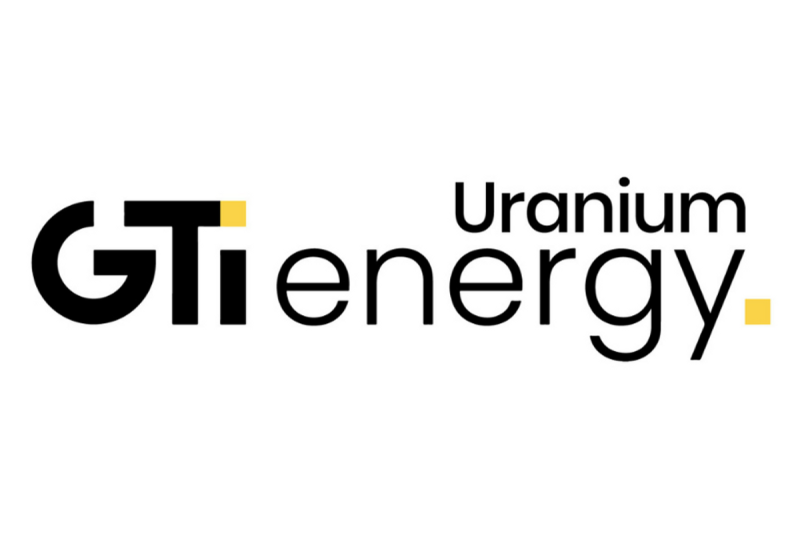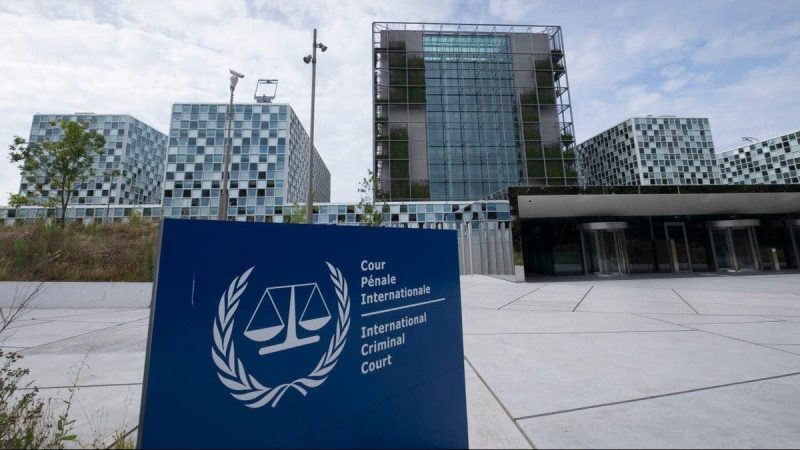
 GTI Energy (GTR:AU) has announced Retraction of Lo Herma Scoping Study Statements
GTI Energy (GTR:AU) has announced Retraction of Lo Herma Scoping Study Statements
Download the PDF here.

 GTI Energy (GTR:AU) has announced Retraction of Lo Herma Scoping Study Statements
GTI Energy (GTR:AU) has announced Retraction of Lo Herma Scoping Study Statements
Download the PDF here.


The global auto sector is under strain as China’s tightened export controls on rare earths begin to ripple across supply chains, shutting down parts production and forcing carmakers to brace for deeper disruptions.
The export curbs, imposed in April in response to US tariffs under President Donald Trump, are now triggering operational slowdowns and halts from Europe to Japan, with suppliers and automakers sounding the alarm.
The European Association of Automotive Suppliers (CLEPA) confirmed this week that several supplier plants in the region have already ceased production due to depleted inventories of rare earths and related magnets.
These materials are critical to both electric and internal combustion engine vehicles, and CLEPA has warned that more shutdowns are imminent if the situation remains unresolved. The group notes that while hundreds of export license applications have been submitted to Chinese authorities, only about a quarter have been approved so far.
“With a deeply intertwined global supply chain, China’s export restrictions are already shutting down production in Europe’s supplier sector,” said CLEPA Secretary General Benjamin Krieger in a statement.
The German Association of the Automotive Industry (VDA), which represents the country’s powerful car manufacturing lobby, echoed this concern in comments made this week.
“The Chinese export restrictions on rare earths are a serious challenge for the security of supply, and not just in the automotive supply chains,” VDA President Hildegard Müller told CNBC in an email.
“If the situation does not change quickly, production delays and even production stoppages can no longer be ruled out.”
China’s commerce ministry began implementing stricter export controls in early April, requiring suppliers of rare earth elements and high-performance magnets to obtain special licenses for overseas shipments.
The process has proven slow, opaque and burdensome, with applications running into the hundreds of pages. According to customs data, exports of rare earth magnets from China halved in April.
The policy has escalated a broader trade conflict between the world’s two largest economies.
Trump imposed tariffs as high as 145 percent on Chinese imports earlier this year in an attempt to rebalance trade flows and revive domestic manufacturing. After initial market backlash, some of those tariffs were scaled back, but China’s retaliatory move to weaponize its dominance of the critical minerals supply chain has reopened the standoff.
“US-based automotive production may have to halt production now because of shortages caused by China of high-performance permanent rare earth magnets,” warned Mark A. Smith, CEO of NioCorp Developments (NASDAQ:NB).
Smith said China is the world’s only source of processed heavy rare earths and holds complete leverage in this domain.
“The only real solution is to accelerate production in the US of these strategic materials and reduce our current dependence on China,” he added in a statement issued by his company this week.
The White House has not publicly commented on the situation, though expectations are high that Trump and Chinese President Xi Jinping will address the export curbs in an upcoming conversation.
In a social media post on Wednesday (June 4), Trump called Xi “VERY TOUGH, AND EXTREMELY HARD TO MAKE A DEAL WITH,” reflecting the fragile state of ongoing trade negotiations.
Analysts have long warned that overreliance on China for critical minerals — including the rare earths needed in wind turbines, electric vehicles, semiconductors and military systems — poses both economic and security risks.
Currently, China accounts for nearly 90 percent of global rare earths refining and 60 percent of rare earths mining.
As governments and companies scramble to shore up supply chains, the rare earths crisis has become emblematic of the vulnerabilities built into the green energy transition — and the geopolitical risks of concentrated supply.
With no immediate end in sight, the global auto sector may be facing the early stages of a protracted disruption.
Securities Disclosure: I, Giann Liguid, hold no direct investment interest in any company mentioned in this article.


Overshadowed by gold in recent months, silver claimed the spotlight on Thursday (June 5).
The white metal’s price rose as high as US$36.03 per ounce in early morning trading, a 13 year high, before retreating toward the US$35.50 mark as US markets began their sessions.
Recent economic and geopolitical events have raised analysts’ expectations of a September rate cut from the US Federal Reserve, helping to fuel safe-haven buying of silver and gold.
The central bank has held its benchmark rate at 4.25 to 4.5 percent since November 2024.

Silver price, May 29 to June 5, 2025.
CME Group’s (NASDAQ:CME) FedWatch tool shows half of market respondents predict a 0.25 percent cut at the Fed’s September meeting, while the other half is split on the Fed holding the line and a deeper 0.5 percent cut.
Silver’s spike also comes after a phone call between US President Donald Trump and Russian President Vladimir Putin. Following the discussion, Trump said a near-term ceasefire between Russia and Ukraine is unlikely, noting that Putin has vowed to respond to recent attacks by Ukraine that destroyed more than 40 nuclear-capable aircraft.
On the economic data front, the US released its weekly unemployment insurance report on Thursday. It shows that the advance figure for seasonally adjusted initial claims was 247,000 for the week ended on May 31. The four week average has been pushed to 1.9 million, the highest level since November 27, 2021.
The US Bureau of Labor Statistics reported more data to suggest a slumping US economy in a Thursday report focused on Q1. In its release, the bureau said that nonfarm labor productivity decreased 1.5 percent in the first quarter of the year as output decreased 0.2 percent and hours worked increased 1.3 percent.
The labor news comes as the Trump administration ratcheted up tariffs on steel and aluminum products to 50 percent this week, raising the possibility of a deepening trade war, and putting greater pressure on the global economy.
Elsewhere, gold and equity markets weren’t faring as well on Thursday.
Gold was off by 0.5 percent in morning trading, falling to US$3,353.66 per ounce.
The metal has surged more than 25 percent this year, setting a slew of new price records, and has continued to trade in elevated territory, fueled by the same conditions as silver’s recent run.
The S&P 500 (INDEXSP: INX) was flat, recording a 0.14 percent decline to 5,961. The Nasdaq-100 (INDEXNASDAQ: NDX) was the sole gainer in morning trading, rising 0.24 percent to 21,776, and the Dow Jones Industrial Average (INDEXDJX: .DJI) was unchanged at 42,422.
Securities Disclosure: I, Dean Belder, hold no direct investment interest in any company mentioned in this article.

The Trump administration on Thursday imposed sanctions on four judges at the International Criminal Court over allegations against Israel.
Secretary of State Marco Rubio announced sanctions against Solomy Balungi Bossa of Uganda, Luz del Carmen Ibáñez Carranza of Peru, Reine Adelaide Sophie Alapini Gansou of Benin, and Beti Hohler of Slovenia.
‘These individuals directly engaged in efforts by the International Criminal Court (ICC) to investigate, arrest, detain, or prosecute nationals of the United States or Israel, without consent from the United States or Israel,’ Rubio said.
The sanctions against the Hague-based court are related to Trump Feb. 6 executive order.
He signed the executive order punishing the ICC in response to its May 2024 arrest warrant for Israeli Prime Minister Benjamin Netanyahu and Israel’s former Defense Minister Yoav Gallant, accusing them of war crimes and crimes against humanity amid Israel’s ongoing conflict against Hamas.
Rubio said the four ICC judges ‘actively engaged in the ICC’s illegitimate and baseless actions targeting America or our close ally, Israel.’
‘The ICC is politicized and falsely claims unfettered discretion to investigate, charge, and prosecute nationals of the United States and our allies,’ he said. ‘This dangerous assertion and abuse of power infringes upon the sovereignty and national security of the United States and our allies, including Israel.’
He said the United States will take ‘whatever actions we deem necessary’ to protect its sovereignty, that of Israel, and other U.S. allies from ‘illegitimate actions by the ICC.’
Rubio noted that member states of the court, ‘many of whose freedom was purchased at the price of great American sacrifices’ and to push back against the court for its ‘disgraceful attack’ against the U.S. and Israel.
Fox News Digital has reached out to the ICC.
The ICC only prosecutes cases when domestic law enforcement authorities cannot or will not investigate. Israel is not a member of the court.
Despite the warrants for Netanyahu and Gallant, the court has no police powers to enforce warrants, instead choosing to rely on cooperation from its member states.

Billionaire Elon Musk dropped a serious bomb on social media on Thursday when he made allegations that President Donald Trump was in the Jeffrey Epstein file.
‘@RealDonaldTrump is in the Epstein files,’ Musk wrote on X. ‘That is the real reason they have not been made public. Have a nice day, DJT!’
Musk followed the post with another, saying, ‘Mark this post for the future. The truth will come out.’
The former ‘First Buddy’ dropped the allegation in response to a back-and-forth series of social media messages between him and Trump.
Shortly after Musk posted about Trump being in the Epstein file, Trump posted his response to Truth Social.
‘I don’t mind Elon turning against me, but he should have done so months ago. This is one of the Greatest Bills ever presented to Congress,’ Trump said, turning his attention to the ‘Big, Beautiful Bill’ that is before the Senate. ‘It’s a Record Cut in Expenses, $1.6 Trillion Dollars, and the Biggest Tax Cut ever given. If this Bill doesn’t pass, there will be a 68% Tax Increase, and things far worse than that.’
‘I didn’t create this mess, I’m just here to FIX IT. This puts our Country on a Path of Greatness. MAKE AMERICA GREAT AGAIN!’ the president added.
Trump lambasted Musk on Thursday afternoon, saying he asked the former Department of Government Efficiency (DOGE) head to leave.
‘Elon was ‘wearing thin,’ I asked him to leave, I took away his EV Mandate that forced everyone to buy Electric Cars that nobody else wanted (that he knew for months I was going to do!), and he just went CRAZY!’ Trump said on Truth Social.
Musk’s bombshell allegation against Trump comes months after a trove of files pertaining to the Epstein case were released.
In February, Attorney General Pam Bondi sent a letter to FBI Director Kash Patel explaining the delay in the release of documents and placing blame on an FBI field office in New York.
Bondi said she requested the full Epstein case file before Patel was confirmed as the head of the FBI and received about 200 pages – far fewer than the number of pages released last year in a civil lawsuit connected to Ghisalaine Maxwell, the trafficker’s former lover and convicted accomplice.
Although Bondi pushed for the release of the full dossier, which included records, documents, audio and video recordings, and materials related to Epstein and his clients, the request remains unfulfilled.
One of the key pieces that remains unreleased is a client list, though Bondi claimed in February it was on her desk to be reviewed.
The documents that have been released so far include flight logs, an evidence list, a contact book and a redacted ‘masseuse list’ believed to refer to Epstein’s victims.
Many people named in the documents have never been accused of Epstein-related wrongdoing. However, some have, like Maxwell; Prince Andrew, who has denied allegations of wrongdoing; and Jean-Luc Brunel, a French modeling agent who, like Epstein, died in a jail awaiting trial.
Epstein, Maxwell, and unnamed co-conspirators allegedly abused young women and underage girls between 1996 and his death in 2019, according to the lawsuit. Citing police documents, it alleges that Epstein recruited girls between 14 and 16 as well as students at Palm Beach Community College for ‘sex-tinged sessions.’
Maxwell is appealing her conviction while serving a sentence at a federal prison in Tallahassee. She is due for release in the summer of 2037.
Fox News Digital’s Andrew Mark Miller and Mike Ruiz contributed to this report.
This is a developing story. Please check back for updates.

Friday marks 81 years since D-Day, the first day of the Normandy landings that laid the foundations for the Allied defeat of Nazi Germany in World War II.
The invasion – codenamed Operation Overlord – saw of tens of thousands of troops from countries including the United States, the United Kingdom and Canada landing on five stretches of the coastline of Normandy, France – codenamed Utah, Omaha, Gold, Juno and Sword beaches.
Planning for D-Day began more than a year in advance, and the Allies carried out substantial military deception to confuse the Germans as to when and where the invasion would take place.
The operation was originally scheduled to begin on June 5, 1944, when a full moon and low tides were expected to coincide with good weather, but storms forced a 24-hour delay. Allied divisions began landing on the five beaches at 6:30 a.m. on June 6.
The term ‘D-Day’ was military code for the beginning of an important operation, with the first ‘D’ being short for ‘Day.’ This means that D-Day actually stands for ‘Day-Day.’
According to the Royal British Legion, the phrase ‘D-Day’ was used fairly often before the Allied invasion in June 1944. After this, however, the two became synonymous, and now D-Day is commonly understood to refer to the beginning of Operation Overlord.
D-Day saw unprecedented cooperation between international armed forces, with more than 2 million troops in the UK in preparation for the invasion, according to the Imperial War Museums (IWM).
Most of these troops were American, British and Canadian, the IWM reports, but troops also came from Australia, Belgium, the Czech Republic, France, Greece, the Netherlands, New Zealand, Norway, Rhodesia (now Zimbabwe) and Poland to participate in Operation Overlord.
The Allied troops’ invasion was coordinated across air, land and sea, in what can be described as amphibious landings.
These were preceded by an extensive bombing campaign to damage German defenses, as well as the employment of deception tactics.
Operation Bodyguard was an umbrella term for the deception strategy leading up to the Allies’ invasion of Europe in June 1944. Operation Fortitude was a tactic under this umbrella specifically related to the Normandy invasion, and was intended to make Nazi Germany believe that the initial Normandy attacks were merely a diversion and that the true invasion would take place elsewhere.
According to the IWM, Fortitude North intended to trick the Germans into believing that the Allies would attack Norway, and Fortitude South was designed to convince the Germans that the Allies were going to invade Pas de Calais, a French department northeast of Normandy that is closer to the UK.
The US troops were assigned to Utah beach at the base of the Cotentin Peninsular and Omaha Beach at the northern end of the Normandy coast. The British subsequently landed on Gold Beach, followed by the Canadians at Juno, and finally the British at Sword, the easternmost point of the invasion.
By midnight, the troops had secured their beachheads and moved further inland from Utah, Gold, Juno and Sword.
However, not all the landings were successful; US forces suffered substantial losses at Omaha Beach, where strong currents forced many landing craft away from their intended positions, delaying and hampering the invasion strategy.
Heavy fire from German positions on the steep cliffs, which had not been effectively destroyed by Allied bombing before the invasion, also caused casualties.
According to the IWM, Germany’s reaction to Operation Overlord was “slow and confused.”
Weather conditions on June 6 were still poor, many senior commanders were not at their posts, and Operation Fortitude convinced Adolf Hitler that the Normandy invasion was a feint before a bigger attack at Pas de Calais.
Germany’s air force was in action elsewhere, countering American bombing operations over Germany. Its navy ships were docked in ports or already destroyed by the Allies. This left only the German army to defend against Operation Overlord, according to the IWM.
On top of this, the success of Operation Fortitude meant that many army units were kept away from the Normandy battlefield until July, as an attack in Pas de Calais was still expected.
German troops manning coastal defenses “did as much as they could have been expected to,” the IWM says, before eventually being “silenced” and Allied units advanced inland.
On D-Day alone, around 4,440 Allied troops were confirmed dead, according to the Commonwealth War Graves Commission (CWGC), with more than 5,800 troops wounded or missing.
Because Omaha Beach was the bloodiest landing beach, the US Army lost the most men in the amphibious landings. Some 2,500 American troops died in the beach assault and airborne operations on D-Day, according to the CWGC.
The precise number of German casualties on the day is unknown, but they are estimated to be between 4,000 and 9,000.
Of the tens of thousands of troops that stormed the beaches of Normandy on D-Day, 44 were soldiers, sailors and airmen from Bedford, Virginia, in the US.
Within minutes of reaching Omaha Beach, 16 of these men were killed and four were wounded. Another Bedford soldier was killed elsewhere on Omaha Beach, and three others were presumed killed in action, bringing Bedford’s D-Day fatality figure to 20 men.
According to the National D-Day Memorial Foundation, Bedford suffered the highest known per capita D-Day loss in the US.
Despite securing a stronghold on the French coast on D-Day, the Allied forces faced the risk that German bombardment could push them back into the sea.
They needed to build up troop numbers and equipment in Normandy faster than the Germans, allowing for a continued invasion into mainland Europe.
The Allies used their air power to slow the German advance toward Normandy by blowing up bridges, railways and roads across the region. This allowed the Allies to gain total control of Normandy 77 days later and move on toward Paris, which they liberated in August 1944.
The US Department of Defense calls D-Day the “successful beginning of the end of Hitler’s tyrannical regime.” The IWM calls it the “most significant victory of the Western Allies in the Second World War.”
By being able to get forces into Normandy, the Allies were able to begin their advance into northwest Europe. Though World War II lasted nearly another year in Europe, the success of Operation Overlord led to the liberation of France and allowed the Allies to fight the Germans in Nazi-occupied Europe.
The US’ National World War II Museum says that a good way to appreciate the significance of D-Day is to imagine what would have happened if the operation had failed. According to the museum, another landing would have not been possible for at least a year.
In this time, Hitler could have strengthened Nazi-occupied Europe’s coastal defenses, developed aircraft and weapons, bombed the UK even more heavily and continued his killing campaign, the museum says.
Fighting by the Allies on the western front and Russian soldiers on the eastern front eventually led to the defeat of the German Nazi forces.
On May 7, 1945, the German Third Reich signed an unconditional surrender at Reims, France. Victory in Europe (V-E) Day is celebrated the following day as that’s when the armistice went into effect.

Former President Joe Biden only signed one pardon by hand during his final weeks in office, and it was his most controversial one.
The Justice Department is reviewing the list of people granted pardons by Biden amid new concerns about his use of an autopen to automatically sign documents and concerns about his state of mind and mental acuity in his final months in office.
Biden used his final weeks as commander in chief to grant clemency and pardon more than 1,500 people in what his White House described as the largest single-day act of clemency by a U.S. president.
Biden appears to have signed those final pardons, including preemptive pardons for members of his family, Dr. Anthony Fauci, Gen. Mark Milley and members and staff of the House committee investigating Jan. 6.
But the former president signed one by hand for his son. Biden pardoned son Hunter in December 2024 after vowing to the American people for months he would not do so.
Hunter Biden was found guilty of three felony gun offenses during special counsel David Weiss’ investigation. The first son was also charged with federal tax crimes over his alleged failure to pay at least $1.4 million in taxes.
Before his trial, Hunter Biden entered a surprise guilty plea.
Former President Joe Biden in December 2024 announced a blanket pardon that applies to any offenses against the U.S. that Hunter Biden ‘has committed or may have committed’ from Jan. 1, 2014, to Dec. 1, 2024.
‘From the day I took office, I said I would not interfere with the Justice Department’s decision-making, and I kept my word even as I have watched my son being selectively, and unfairly, prosecuted,’ the former president said.
‘There has been an effort to break Hunter — who has been five and a half years sober, even in the face of unrelenting attacks and selective prosecution. In trying to break Hunter, they’ve tried to break me — and there’s no reason to believe it will stop here. Enough is enough.
‘I hope Americans will understand why a father and a president would come to this decision.’
Weiss, who charged Hunter Biden, blasted the former president for pardoning his son, saying his characterizations of the yearslong probe were ‘wrong’ and ‘unfairly’ maligned Justice Department officials.
Weiss, in the report, blasted the president’s decision to pardon and the press release to the public that ‘criticized the prosecution of his son as ‘selective,’ ‘unfair,’ ‘infected’ by ‘raw politics’ and a ‘miscarriage of justice.”
‘This statement is gratuitous and wrong,’ Weiss wrote in his report. ‘Other presidents have pardoned family members, but in doing so, none have taken the occasion as an opportunity to malign the public servants at the Department of Justice based solely on false accusations.’
In another section of the report, Weiss noted that, in light of the presidential pardon, he ‘cannot make any additional charging decisions,’ adding it would be ‘inappropriate’ to discuss ‘whether additional charges are warranted.’
‘Politicians who attack the decisions of career prosecutors as politically motivated when they disagree with the outcome of a case undermine the public’s confidence in our criminal justice system,’ Weiss wrote. ‘The President’s statements unfairly impugn the integrity not only of Department of Justice personnel, but all of the public servants making these difficult decisions in good faith.
‘The President’s characterizations are incorrect based on the facts in this case, and, on a more fundamental level, they are wrong.’
Biden’s use of an autopen for signatures is under investigation by Attorney General Pam Bondi.
President Donald Trump directed Bondi to investigate whether certain individuals working for Biden conspired to deceive the public about his mental state while also exercising his presidential responsibilities by using an autopen.
In a memo Wednesday, Trump said the president of the U.S. has a tremendous amount of power and responsibility through the signature. Not only can the signature turn words into laws of the land, but it also appoints individuals to some of the highest positions in government, creates or eliminates national policies and allows prisoners to go free.
‘In recent months, it has become increasingly apparent that former President Biden’s aides abused the power of Presidential signatures through the use of an autopen to conceal Biden’s cognitive decline and assert Article II authority,’ Trump wrote.
‘This conspiracy marks one of the most dangerous and concerning scandals in American history. The American public was purposefully shielded from discovering who wielded the executive power, all while Biden’s signature was deployed across thousands of documents to effect radical policy shifts.’
He added that Biden has experienced ‘serious cognitive decline’ for years, and the Department of Justice recently concluded Biden should not stand trial despite clear evidence he broke the law, because of his mental state.
‘Biden’s cognitive issues and apparent mental decline during his presidency were even ‘worse’ in private, and those closest to him ‘tried to hide it’ from the public,’ Trump said. ‘To do so, Biden’s advisors during his years in office severely restricted his news conferences and media appearances, and they scripted his conversations with lawmakers, government officials, and donors, all to cover up his inability to discharge his duties.’

A House fiscal hawk wants to create a payment plan for congressional emergency spending to create accountability for the ‘no rules apply’ funding stream.
Rep. Marlin Stutzman, R-Ind., is set to introduce the Emergency Spending Accountability Act that would add guardrails to last-minute funding meant for national emergencies, like natural disasters, the COVID-19 pandemic or other spending meant to fill the gaps in the appropriations process.
Stutzman told Fox News Digital that lawmakers will go about the usual budgeting process, passing stopgap spending bills or colossal, omnibus spending packages, but that ‘somewhere in between’ there’s always extra money pushed out the door for emergencies.
‘Whenever there’s an emergency, Congress always overreacts,’ he said. ‘And I believe they pass these big spending bills under the guise of an emergency, national emergency, and spend money that we don’t take into consideration through our budget process.’
He said that when he first came to Washington in 2010, the national debt was $9 trillion. After leaving the House and returning during last year’s election cycle, that number has since ballooned to more than $36 trillion.
And since the early 1990s, more than $12 trillion in emergency spending has added to the ever-growing deficit. The lawmaker said that the money dedicated for emergency use was rarely ever paid back, and he argued that the taxpayer dollars were sometimes not used for actual emergencies.
Stutzman’s legislation, which so far has seven House Republican co-sponsors, would require the federal government to pay off the balance of future emergency spending by 20% each year for five years after an emergency following a green-light from lawmakers to open up the cash flow.
His bill would also stipulate that any emergency spending would have to comport with the criteria laid out by the Balance Budget and Emergency Control Act of 1985, which laid out a five-point roadmap to justify that emergency spending be necessary, sudden, urgent, unforeseen and not permanent.
He understood that there is always a need for emergency spending, giving the examples of the pandemic and of Hurricane Sandy, which blasted through the East Coast more than a decade ago, but he noted there should be offset cuts to account for the spending and better planning on how the taxpayer dollars would be used.
‘Most companies and family budgets, they always have a rainy-day fund or an emergency fund that they can tap into if they need it for unexpected costs and expenses, but that’s not the way Washington works,’ Stutzman said. ‘So that’s the idea.’

Sen. Adam Schiff faced pushback after calling on White House counsel David Warrington to release financial disclosures for senior officials—prompting a Trump aide to suggest he start by requesting the same from longtime Rep. Nancy Pelosi.
‘The American people remain highly concerned about Nancy Pelosi’s long, documented history of insider trading and eagerly await Adam Schiff refocusing his political stunt on serious issues, like Pelosi’s portfolio,’ White House spokesman Kush Desai told ABC News after it inquired about Schiff’s letter.
In a letter to Warrington and White House chief of staff Susie Wiles, Schiff, D-Calif., expressed ‘continued and growing concern regarding … failure to submit any financial disclosure reports for senior White House officials to the Office of Government Ethics within the statutorily mandated period.’
Schiff demanded the White House turn over a list of officials required to file ‘new entrant’ reports, an explanation for ‘failure to transmit’ such reports for certification and any late-filing fees imposed for ‘delinquent filings.’
He noted that he had signed on to a bicameral April letter that included fellow Californian Rep. Mike Levin, Rep. Jerrold Nadler, D-N.Y., and several other Democrats asking for similar information.
In comments to Fox News Digital on Thursday, the White House pushed back again on Schiff, saying that all officials there who are required to file public reports continue to comply with their obligations.
‘… including the obligation to file periodic transaction reports disclosing the purchase or sale of certain securities,’ said Taylor Rogers, a White House spokeswoman.
‘For decades, administrations of both parties, including the first Trump Administration, have fulfilled this obligation, recognizing that public trust in government depends on robust, enforceable transparency standards,’ Schiff said in a statement.
‘However, senior officials in this administration have repeatedly failed to disclose assets and business entanglements, as well as potentially misused their official positions for personal gain.’
‘Transparency and compliance with ethics laws are essential.’
In that regard, Desai’s initial response highlighted ongoing criticisms of Pelosi, whose net worth is reportedly north of $120 million, and who has been accused of wrongful financial transactions over her 38 years in the House.
Pelosi, a California Democrat, did not respond to a request for comment, and the Speaker Emerita kept walking when asked on the Hill about the matter last month by a Fox News Digital reporter.
Sen. Josh Hawley, R-Mo., introduced the PELOSI– Preventing Elected Leaders from Owning Securities and Investments – Act in 2023, and fellow Missourian Rep. Mark Alford crafted a similar bill in the House, alluding to allegations against her over the years.
Trump has said he would support such legislation this term, telling Time he had purportedly ‘watched Nancy Pelosi get rich through insider information, and I would be OK with it. If they send that to me, I would do it.’
Fox News Digital found no record of Schiff making similar requests to the Biden administration and received no response from the Burbank lawmaker when asked for comment.
Fox News Digital’s Peter Pinedo and Remy Numa contributed to this report.

Elon Musk and President Donald Trump’s feud about the ‘Big, Beautiful Bill’ continued on Thursday when the tech billionaire responded to the president’s criticism in a post on X.
‘Without me, Trump would have lost the election, Dems would control the House and the Republicans would be 51-49 in the Senate. Such ingratitude,’ Musk wrote in a post responding to Trump’s remarks about him.
While speaking with reporters in the Oval Office, Trump said that he was ‘very disappointed’ by Musk’s vocal criticisms of the bill. The president claimed that Musk knew what was in the bill and ‘had no problem’ with it until the EV incentives had to be cut.
‘I’m very disappointed because Elon knew the inner workings of this bill better than almost anybody sitting here, better than you people. He knew everything about it. He had no problem with it,’ Trump said. ‘All of a sudden, he had a problem. And he only developed the problem when he found out that we’re going to have to cut the EV mandate.’
Musk pushed back on the president’s claim in another post on X and said that ‘this bill was never shown to me even once and was passed in the dead of night so fast that almost no one in Congress could even read it!’
The Tesla founder has been a vocal critic of the Trump administration and Republicans over the last few days because of the legislation that the president has pushed. Musk has taken to calling it the ‘Big Ugly Bill’ and at one point advocated for a ‘Slim, Beautiful Bill.’
Earlier on Thursday, Musk highlighted Trump’s old posts that seemingly align with the tech billionaire’s current positions and objections to the ‘Big, Beautiful Bill.’
Trump turned to social media on Thursday afternoon to criticize Musk, who he appointed to find ways to cut $2 trillion after forming the Department of Government Efficiency (DOGE).
‘Elon was ‘wearing thin,’ I asked him to leave, I took away his EV Mandate that forced everyone to buy Electric Cars that nobody else wanted (that he knew for months I was going to do!), and he just went CRAZY!’ Trump said in one post.
‘The easiest way to save money in our Budget, Billions and Billions of Dollars, is to terminate Elon’s Governmental Subsidies and Contracts. I was always surprised that Biden didn’t do it!’ he wrote in another.
Musk has also faced criticism from House Speaker Mike Johnson, who said on Wednesday that he was ‘surprised’ by the former DOGE leader’s objections to the legislation. The Republican lawmaker said that he and Musk, whom he considers a ‘friend,’ had a ‘great conversation’ about the bill on Monday. Johnson told reporters on Wednesday that Musk was ‘flat wrong’ about the legislation.
Meanwhile, there are several Republicans who have expressed solidarity with Musk, including Rep. Thomas Massie, R-Ky., Sen. Rand Paul, R-Ky., and Sen. Mike Lee, R-Utah. Additionally, Sen. John Kennedy, R-La., said that Musk was right to be concerned that Americans are ‘quickly becoming debt slaves.’
Now that the bill has passed the house, it’s up to the Senate to meet Trump’s July 4 deadline.